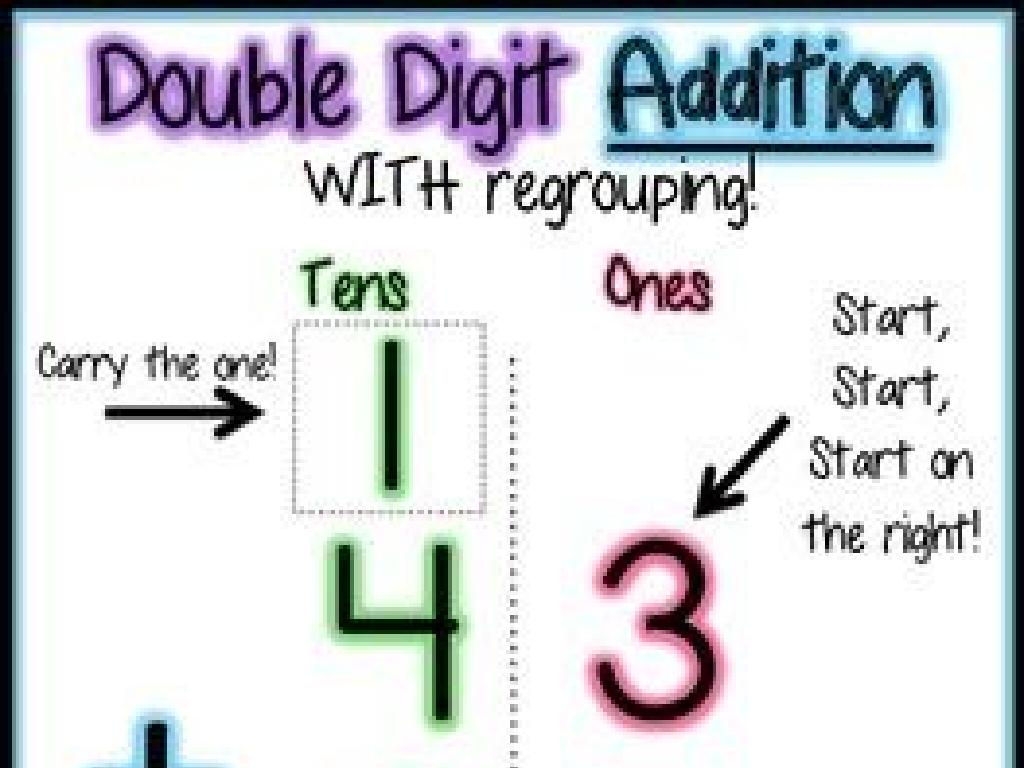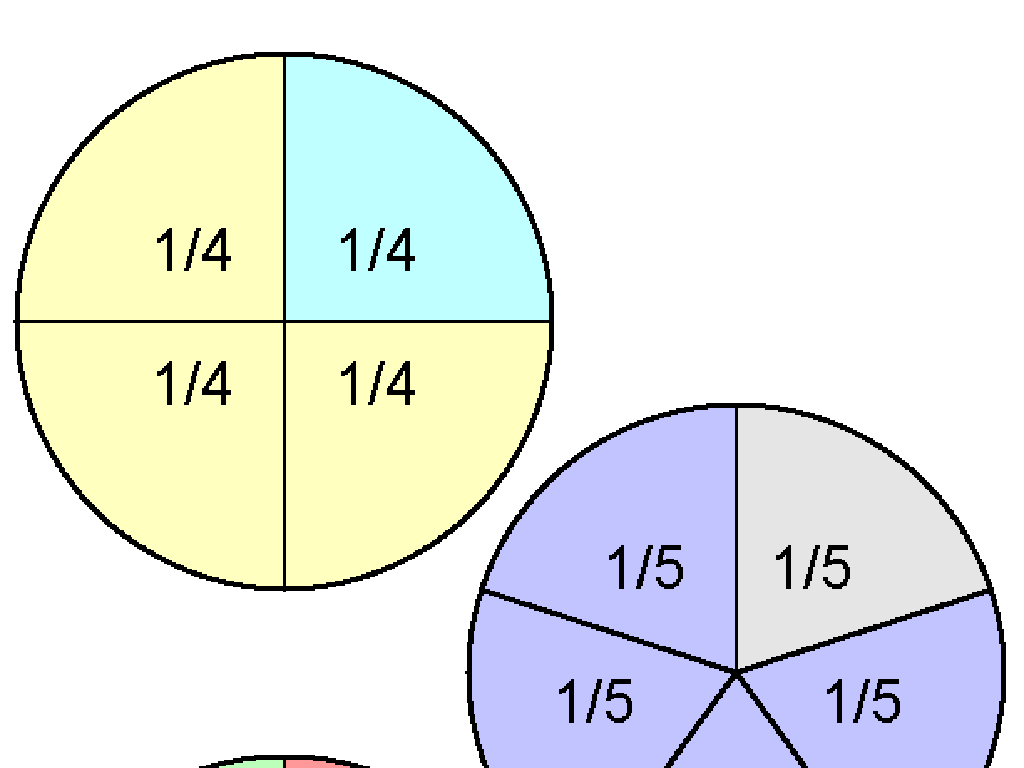Graph Solutions To One-Step Inequalities
Subject: Math
Grade: Sixth grade
Topic: One-Variable Inequalities
Please LOG IN to download the presentation. Access is available to registered users only.
View More Content
Understanding One-Step Inequalities
– What are inequalities?
– Inequalities show that two values are not equal and have a greater than or less than relationship.
– Defining one-step inequalities
– One-step inequalities involve only one operation to solve, such as x + 3 > 5 or 2y 12 years) or minimum height for rides (e.g., must be e 42 inches).
– Graphing on a number line
– Visual representation of solutions, such as shading to the right of a point for x > a.
|
This slide introduces students to the concept of one-step inequalities within the broader topic of one-variable inequalities. Begin by explaining what inequalities are and how they differ from equations. Emphasize that inequalities show a relationship of greater than, less than, or not equal to. Introduce one-step inequalities as the simplest form of inequalities that can be solved with one operation. Provide relatable examples to illustrate how inequalities are present in everyday life, such as age restrictions or height requirements. Finally, explain that graphing these inequalities on a number line helps visualize the range of possible solutions. Encourage students to think of additional real-life examples and to practice graphing inequalities.
Understanding Inequalities
– Define an inequality
– An inequality shows how values differ
– Symbols: greater & less than
– ‘>’ means more, ‘<' means less
– Symbol: not equal to
– '`' shows values are not the same
– Significance of inequalities
– Inequalities help compare & contrast numbers
|
Begin the lesson by defining an inequality as a mathematical statement that compares two values, showing that they are not equal. Introduce the symbols for greater than (>) and less than (<), and explain how they are used to represent the relationship between numbers. Discuss the not equal to (`) symbol and its importance in showing that two values are not the same. Emphasize the significance of inequalities in everyday situations, such as comparing scores, prices, or quantities, and how they help us make decisions based on numerical comparisons. Provide examples and encourage students to think of situations where they might use inequalities to describe differences between numbers.
Graphing Inequalities on a Number Line
– Understanding a number line
– A visual representation of numbers in order
– Plotting numbers on a line
– Points on the line correspond to numbers
– Graphing basic inequalities
– Use open/closed circles to show greater/less than
– Practice with real examples
– Apply skills to graph x > 3 or x d 5
|
This slide introduces students to the concept of a number line as a foundational tool in mathematics for representing and ordering numbers. Emphasize the importance of spacing and consistency when drawing a number line. Demonstrate how to plot whole numbers, fractions, and negative numbers. Transition to graphing inequalities by explaining the difference between open and closed circles and how they represent ‘greater than’ or ‘less than’ scenarios. Provide clear examples, such as graphing x > 3 with an open circle at 3 and an arrow to the right, and x d 5 with a closed circle at 5 and an arrow to the left. Encourage students to practice by graphing a set of inequalities to reinforce the concept.
Graphing Solutions to One-Step Inequalities
– Solve inequalities with addition/subtraction
– Add or subtract to isolate the variable, e.g., x – 3 > 2 becomes x > 5
– Solve inequalities with multiplication/division
– Multiply or divide to find the variable, e.g., 4x < 20 becomes x 4 becomes x < -2
– Graphing solutions on a number line
– Plot the solution set of the inequality on a number line
|
This slide introduces students to the concept of solving one-step inequalities and graphing their solutions. Start by explaining how to isolate the variable using addition or subtraction, similar to solving equations. Then, show how multiplication or division is used to solve inequalities, emphasizing that the process is alike but with an inequality sign. Highlight the critical rule of flipping the inequality sign when multiplying or dividing by a negative number, as this is a common area of confusion. Conclude by demonstrating how to represent the solution set on a number line, which visually reinforces the concept of inequality solutions. Provide practice problems for each type of operation and ensure students understand why the sign flips with negative numbers through examples.
Graphing One-Step Inequalities
– Graphing inequality solutions
– Plot solutions on a number line
– Open vs. closed circles
– Open circle: not included, Closed: included
– Practice graphing problems
– Solve and graph x + 3 > 5, x – 2 d 7
|
This slide introduces students to the concept of graphing solutions to one-step inequalities on a number line. Emphasize the difference between open and closed circles, where open circles represent values that are not included in the solution (for ‘greater than’ or ‘less than’), and closed circles represent values that are included (for ‘greater than or equal to’ or ‘less than or equal to’). Provide practice problems for students to apply these concepts, such as graphing x + 3 > 5 and x – 2 d 7, and encourage them to explain their reasoning. This will help solidify their understanding of how to visually represent inequalities.
Let’s Practice Graphing Inequalities!
– Graphing x > 3 on a number line
– Plot an open circle at 3 and shade right
– Graphing y d -2 on a number line
– Plot a closed circle at -2 and shade left
– Class participation: suggest inequalities
– Practice graphing your examples
|
This slide is designed for an interactive class activity on graphing one-step inequalities. Start by demonstrating how to graph the inequality x > 3 by placing an open circle at 3 on the number line to indicate that 3 is not included, and then shading to the right to show all numbers greater than 3 are solutions. Next, show y d -2 by placing a closed circle at -2, indicating that -2 is included, and shading to the left. After the examples, invite students to come up with their own one-step inequalities and guide them to graph these on the board. This activity will help reinforce their understanding of graphing inequalities and the difference between open and closed circles. Provide additional support and guidance as needed, and ensure each student has the opportunity to participate.
Real-World Applications of Inequalities
– Inequalities in daily life
– Budgeting with inequalities
– If you have $50 a week, spending ‘x’ dollars on snacks means x d 50.
– Temperature ranges
– Temperature for the day is above freezing: T > 32°F.
– Sports scores & rankings
– To make the playoffs, a team needs more wins than losses: W > L.
|
This slide aims to show students how one-step inequalities are not just abstract math concepts but are actually used in everyday situations. Discuss how budgeting involves setting limits on spending, which can be expressed as inequalities. Explain that temperature ranges, such as those for a comfortable day or freezing conditions, can also be described using inequalities. Sports scores and rankings are another relatable example, where teams must have a greater number of wins than losses to advance. Encourage group discussion to let students brainstorm other areas where inequalities apply, such as cooking recipes or time management. This will help them understand the practicality and ubiquity of inequalities in their daily lives.
Class Activity: Inequality Scavenger Hunt
– Find classroom inequality examples
– Create a one-step inequality
Think of situations like ‘x > number of books’ or ‘x < height of a desk'
– Graph your inequality
Use a number line to show the solution set
– Present your findings
Explain your example and graph to the class
|
This interactive activity is designed to help students apply their understanding of one-step inequalities to real-life situations. Encourage students to explore the classroom and identify examples where inequalities are naturally present. Guide them to create their own one-step inequalities based on their observations. Provide them with materials to graph their inequalities on a number line. Finally, have each student present their example and graph to the class, explaining the reasoning behind their inequality. This will reinforce their understanding and provide practice in graphing solutions. Possible variations for the activity could include pairing students for collaborative learning, using outdoor examples if the classroom setting is limited, or incorporating technology by having students use graphing software or apps.
Wrapping Up: One-Step Inequalities
– Recap today’s key points
– Homework: Inequality worksheet
– Solve and graph inequalities on the worksheet
– Remember: Practice is key
– Regular practice improves skills
– Any questions before we end?
– Clarify any doubts now or in the next class
|
As we conclude today’s lesson on one-step inequalities, it’s important to review the main concepts we’ve covered, including solving and graphing inequalities. Assign the provided worksheet for homework to reinforce these skills. Emphasize the importance of regular practice to become proficient in solving inequalities. Encourage students to ask any lingering questions they might have now, or remind them they can always ask in the next class. This will ensure they are well-prepared and confident in their understanding of one-step inequalities.





